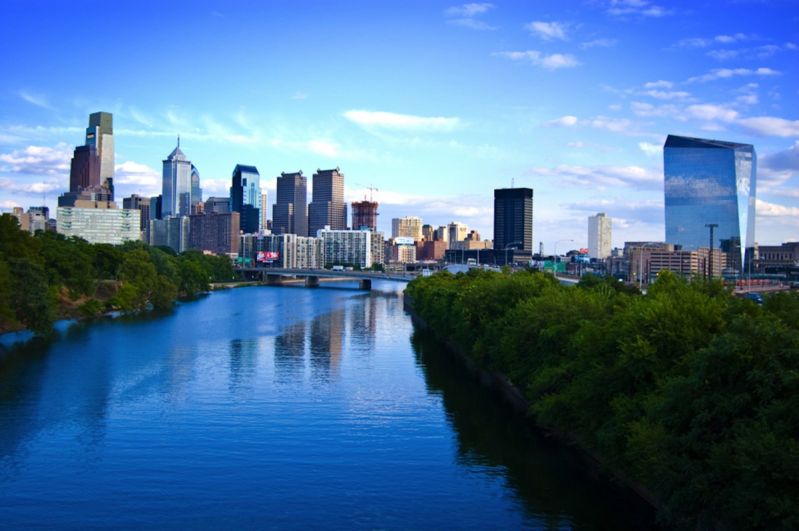With a Green Makeover, Philadelphia Is Tackling Its Stormwater Problem
Published on by Water Network Research, Official research team of The Water Network in Academic
In a major initiative, Philadelphia is building an extensive network of rain gardens, green roofs, wetlands, and other infrastructure to capture stormwater. The goal is to prevent runoff from overwhelming sewers and polluting waterways and to help green America’s fifth-largest city.
The city is now in the seventh year of a 25-year project designed to fulfill an agreement with the U.S. Environmental Protection Agency (EPA) to reduce by 85 percent Philadelphia’s combined sewer overflows.
BY BRUCE STUTZ

Philadelphia, Source: PxHere
These overflows occur when heavy rains overwhelm the capacity of the city’s sewage treatment plants to handle the flow from both storm and sanitary sewers, forcing the diversion of untreated effluent into the system’s river outfalls. But rather than spending an estimated $9.6 billion on a “gray” infrastructure program of ever-larger tunnels, the city is investing an estimated $2.4 billion in public funds — to be augmented by large expenditures from the private sector — to create a citywide mosaic of green stormwater infrastructure.
Integrated into the city’s green spaces, streetscapes, and public and private buildings, this green infrastructure ranges from simple home rain barrels and downspout planters to complex bioretention swales underlain by drains, filled with sandy soil, and planted with resilient species of grasses, perennials, shrubs, and trees.
Along with rain gardens, tree trenches, green roofs, and urban wetlands, this infrastructure will, as one study put it, “optimize and engineer the landscape” to mimic and restore its natural hydrologic regime. In the end, Philadelphia hopes by the mid-2030s to create the largest green stormwater infrastructure in the United States.
Philadelphia began by adopting and adapting technologies developed on smaller scales in other locales. In the early 1990s, Prince George’s County, Maryland, for instance, explored the use of bioretention — directing stormwater into small depressed landscaped areas where it could infiltrate and be filtered through soil and plants.
The success of what were then called “low-impact development” designs in detaining runoff and removing contaminants of all kinds inspired green infrastructure efforts in other places. These local governments eventually realized the advantages, both financial and environmental, of green stormwater infrastructure.
In Philadelphia, the measure of the city’s progress is a “greened acre.” Each acre of the city receives some 1 million gallons of rainfall annually. Once “greened,” an acre of impervious surface will have its first inch of runoff managed by stormwater infrastructure and the pollution from that acre sharply reduced. The city plans to create roughly 10,000 of these acres. To date, the Philadelphia Water Department has built nearly 1,100 greened acres and expects to add another 1,300 in the next three years; the green infrastructure already is exceeding targets for stormwater overflow reduction, cutting that volume by 1.7 billion gallons — nearly three times the original projection.
Read full article: e360 Yale
Media
Taxonomy
- Urban Drainage
- Integrated Urban Water Management
- Urban Water
- Urban Resource Management
- Urban Water Supply
- Urban Drainage System
- Urban Water Infrastructure
- Landscape & Urban Design
- Urban Design
- urban water security
- Urban Engineering